Over the years, Leucaena Leucocephala has been a constant source of frustration to many farmers in my region.
As a kid, I remember watching an elderly neighbor painstakingly uproot small plants, referring to them by names I dare not repeat, even to this day.
Years later, I finally found the name of this troublesome bush while researching supporting trees for my Agroforestry system. I was intrigued to discover some of the little-known uses and benefits.
In this article, you’ll learn:
- What Does Leucaena Leucocephala Look Like?
- What Are Some Common Names For Leucaena Leucocephala?
- Is Leucaena Leucocephala Invasive?
- 6 Uses Of Leucaena Leucocephala.
- How To Grow Leucaena Leucocephala.
- How To Get Rid Of Leucaena Leucocephala. (Without Chemicals)
Let’s dive in.
What Does Leucaena Leucocephala Look Like?
Leucaena Leucocephala is the most popular species in a family of leguminous, drought-tolerant trees and bushes, native to Central and South America but grows worldwide.
As a tree, it can grow up to 30 feet tall. However, it is not unusual to see them growing as short bushes in frequently trimmed areas.
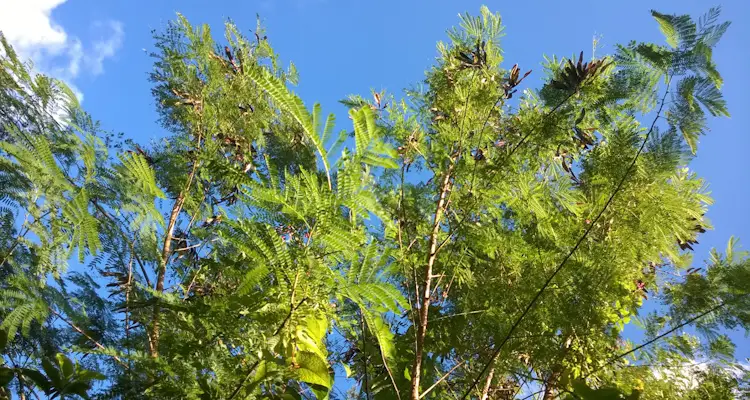
The leaves of the Leucaena plant look like larger versions of the Mimosa Pudica, commonly known as Sleeping Beauty. They are easily identified by their clustered leaves, made up of tiny leaflets.
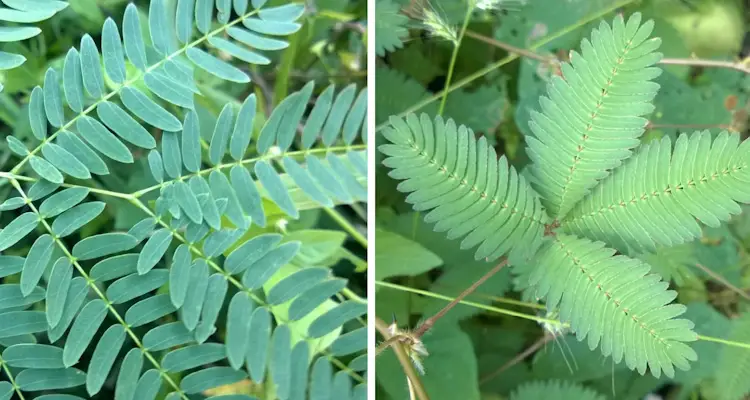
Note: Unlike the sleeping beauty, the leaves of the Leucaena plant do not close with touch. However, the leaves of the young plants fold in the evenings.
Leucaena produces puffy white flowers and green seed pods, which turn brown as they mature. It is common to see all of these on the tree simultaneously.
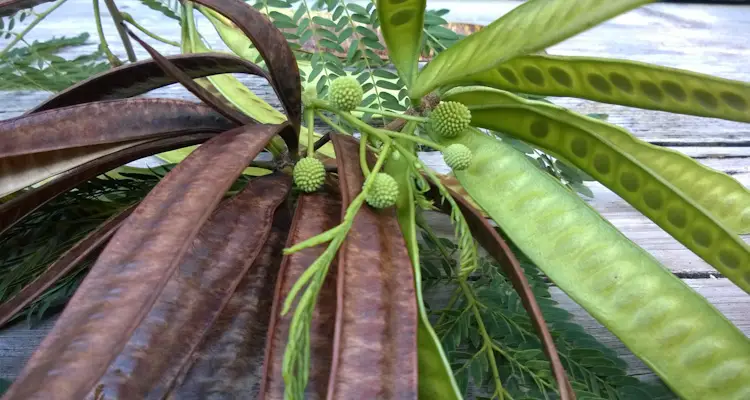
Note: The young pods and leaves are edible and used mainly to feed livestock.
What Are Some Common Names For Leucaena Leucocephala?
While Leucaena is native to the Americas, it was brought to different parts of the world, where it received various local names.
Here are some of the most common names for Leucaena Leucocephala and the countries they are used.
| Name | Country |
| Tan Tan | U.S. Virgin Islands |
| Ipil Ipil | Malaysia, Sri Lanka, Philippines |
| Kao Haole (False Koa) | Hawai’i |
| River Tamarind, Wild Tamarind | Puerto Rico |
| White Lead Tree | North America |
| Jumbay | Philippines |
| Popinac | India |
| Pri Pri Tree | Grenada |
| Leucaena | Caribbean (English) |
| Zarcilla, Acacia Palida | Puerto Rico |
| Wild Mimosa | Bermuda |
| Lino Crillo | Dominican Republic |
People simply refer to it as Leucaena or some name variation in many English-speaking countries.
Note: There are reportedly about 100 names used to refer to Leucaena Leucocephala in different languages and dialects.
Is Leucaena Leucocephala Invasive?
In Agroforestry, many people use and promote Leucaena as a source of biomass and animal fodder.
However, Leucaena Leucocephala is classified as one of the most invasive plants in the world. It spreads as the wind carries dry, seed-baring pods to new locations.
Once established, the tree thrives and adapts to harsh conditions, including drought, and is resilient to extensive pruning.
I am not denying that Leucaena can quickly get out of hand and potentially spread throughout a region.
However, we must also remember that it was more than just animal food in its original environment.
It is considered a miracle tree in some countries due to its many uses. Let’s take a look at some of these.
6 Uses Of Leucaena Leucocephala
In its native countries, Leucaena serves many purposes.
Here are some of the most common uses of Leucaena Leucocephala.
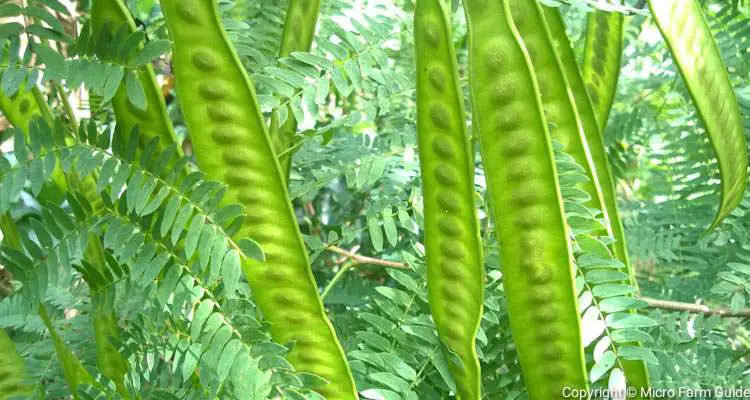
1. Fodder
As mentioned before, Leucaena was first brought to different countries as a source of animal fodder.
It is a valuable food source for grazing animals, such as goats, especially during dry spells.
However, it is advised to avoid feeding it to horses and donkeys since it contains toxic substances.
Chickens also seem to enjoy the leaves when given as a snack.
2. Food
For instance, many people often overlook that the green pods are edible and have been prepared in various places in Central America for centuries.
In fact, Leucaena pods are depicted in numerous paintings as a vegetable sold in the market, a practice that continues to this day.
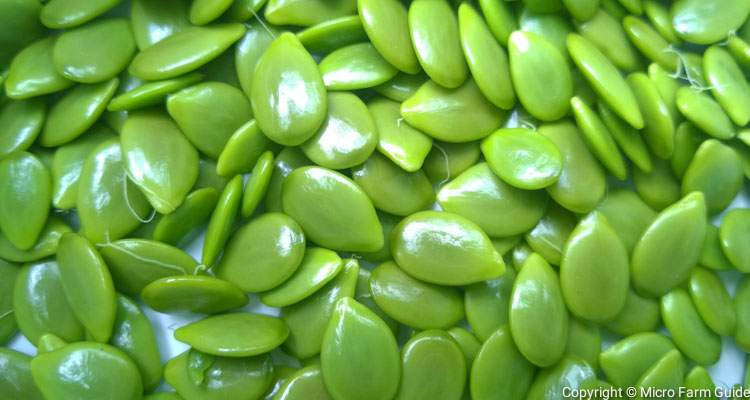
3. Biomass
The rapid growth and regrowth of Leucaena make it popular among Agro foresters.
The branches are routinely pruned, and leaves are used as mulch.
The wood is relatively soft and decomposes rapidly, making it ideal as a liner for walkways serving as food and a habitat for beneficial microbes.
4. Soil Builder
Apart from its contribution to soil building through organic matter, Leucaena Leucocephala is also a nitrogen fixer.
Leucaena uses an extensive taproot system that grows deep into the soil, transferring water and minerals to the surface.
5. Fuel
Leucaena offers a continuous source of firewood and charcoal.
While many people may not consider it ideal due to its softness, most will agree that it works.
6. Medicinal
Traditionally, the mature seeds of the Leucaena plant were used to create various medicines.
One of the most popular of these medicines still used up to this day is an animal dewormer made from the plant’s seeds.
I couldn’t find specific studies confirming their medicinal benefits like many traditional medicines. However, some studies indicated the presence of various beneficial and toxic compounds.
How To Grow Leucaena Leucocephala?
Leucaena Leucocephala overgrows in just about any condition. It can be propagated from cuttings, but seeds are the preferred option.
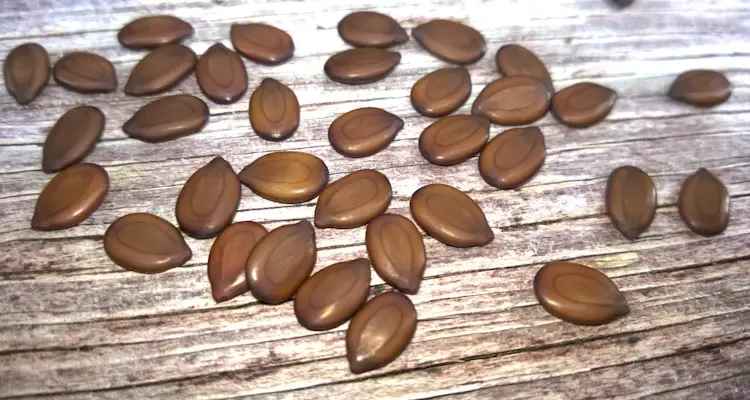
If available, you can collect seeds from dry pods on a nearby tree. You can sow these directly into the planting area.
However, I prefer to pre-soak the seeds and place them on the tissue until they germinate. This takes about three days, based on the temperature.
Once germinated, you can sow the seeds into small pots. You can transplant them in about 4 weeks to allow their tap roots to form correctly in the soil.
Ensure they get enough water for the first two weeks or so. Once they are established, they will take care of themselves.
Note: Please confirm with your local Agriculture Department if you are not sure whether or not you are permitted to grow Leucaena in your area.
How To Get Rid Of Leucaena Leucocephala? (Without Chemicals)
Remember that elderly neighbor I mentioned earlier? He basically had the right idea but was missing an important point.
To get rid of Leucaena Leucocephala, you have to repeatedly remove all instances of the plant. You can do this by uprooting seedlings, cutting down large trees, and trimming regrowth before producing mature seeds. After a while, the tree eventually stops resprouting.
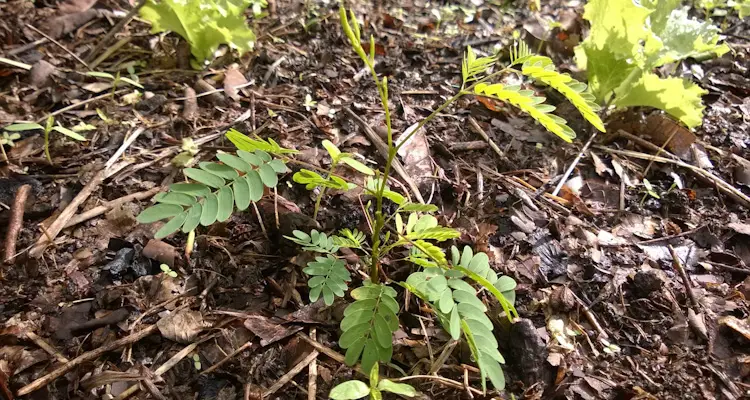
However, as long as there is even one tree in your neighborhood, you will have a never-ending battle. Since Leucaena seeds are transported through the air on windy days.
If necessary, the complete removal of the tree might require community or even government intervention.
Alternatively, it is possible to keep the tree in check by simply using and managing it, as mentioned above.
Final Thoughts
Leucaena Leucocephala is a versatile tree that tends to be invasive if not managed properly.
Traditionally, many farmers used it as a source of medicine, fuel, and food for both animals and people.
In Agroforestry Systems, its rapid growth and natural resilience to trimming make it an ideal support plant, providing benefits to the soil and neighboring plants.
However, if underused or poorly managed, it can be a source of headache to farmers and the country as a whole.
In short, you should think carefully before planting or getting rid of this tree.
Related Questions
What Are Pioneer Trees? (Colonizers)
Pioneer Trees are species of resilient plants that grow in relatively barren habitats. They can withstand harsh growing conditions and ultimately help create more suitable conditions for future vegetation.
What Are Support Plants In Agroforestry Systems?
In Agroforestry systems, support plants are trees and other vegetation grown primarily to create favorable conditions for the main crops. These can include nitrogen-fixing, biomass, shade, fodder timber, and even trellises for vining plants.
References
Weed Identification Tool. Leucaena Leucocephala. weeds.brisbane.qld.gov.au. Accessed January 2022
Pastures Australia. Leucaena. keys.lucidcentral.org. Accessed January 2022
Philippine Medicinal Plants. Ipil Ipil. staurtxchange.org. Accessed January 2022
Global Invasive Species Database. Leucaena Leucocephala. iucngisd.org. Accessed January 2022

